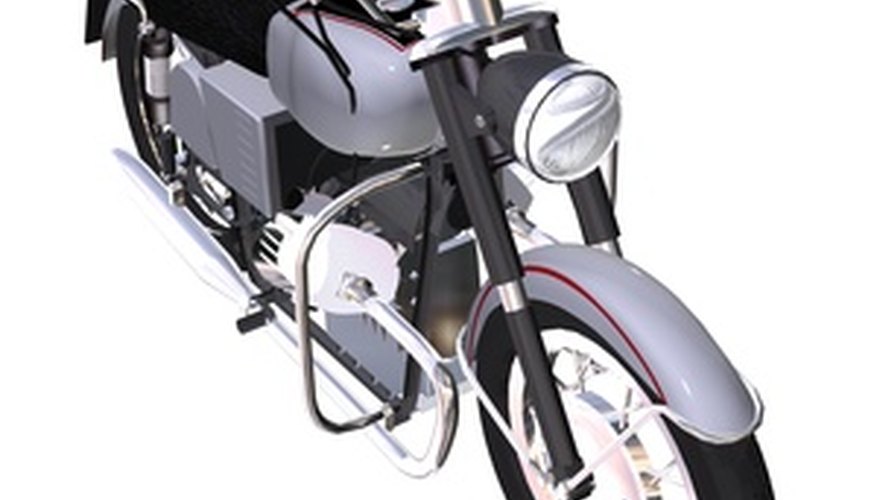Typically, motorcycle ignition switches are near the steering headset or at one side of the engine. With kick-start bikes, leads from the switch connect to the battery and the ignition coil. With electric starters, leads from the ignition switch connect to the battery and the starter. The function of an ignition switch is to complete the electrical circuit so the bike will start and run. Troubleshooting a motorcycle ignition switch begins with the battery.
- Typically, motorcycle ignition switches are near the steering headset or at one side of the engine.
- With kick-start bikes, leads from the switch connect to the battery and the ignition coil.
Remove the battery cover using the appropriate motorcycle tool or by loosening the knob on the battery cover. Connect the red voltage meter clip to the positive battery terminal, indicated with a "Plus" sign. Connect the black meter clip to the negative battery terminal as indicated with a "Minus" sign.
Switch the voltage meter to 12 volts and note the meter reading. The battery must have a minimum of 12 volts to troubleshoot the ignition system. If necessary, disconnect the wire leads from the battery using a screwdriver or small open-end wrench. Remove the battery and charge it fully.
Re-install the charged battery and reconnect the positive and negative battery leads to the appropriate battery terminals. Re-attach the red and black voltage meter leads to the battery terminals as before.
Switch the voltage meter to 12 volts and check the battery as before. If the meter does not show a reading, the battery needs replacing. If the meter shows a reading in the range of 12 volts, proceed to the following steps to troubleshoot the ignition switch.
- Switch the voltage meter to 12 volts and note the meter reading.
- Switch the voltage meter to 12 volts and check the battery as before.
Locate the grey wire and corresponding wire terminal on the back of the ignition switch. If necessary, use the appropriate tool and remove the switch from its mount in order to access the ignition wire terminals at the back of the switch.
Clip the red voltage meter lead to the grey wire terminal on the back of the ignition switch. Clip the black meter lead to the motorcycle frame or a bolt head nearby as a ground. Insert the ignition key into the switch.
- Locate the grey wire and corresponding wire terminal on the back of the ignition switch.
- Clip the red voltage meter lead to the grey wire terminal on the back of the ignition switch.
Set the voltage meter to 12 volts resistance and turn the ignition key to the "On" position. The meter should show a reading in the range of 12 volts. If the meter shows a reading, the starting problem is not with the ignition switch. If the meter does not show a reading, proceed to the following steps.
Turn the ignition key to the "Off" position. Disconnect the red voltage meter clip from the grey wire terminal.
Check each of the wire lead connections at the back of the ignition switch. Depending on the particular model of switch, use a small screwdriver or pliers to secure wires to the connection terminals at the back of the switch.
Set the voltage meter at 12 volts and reconnect the red meter clip to the grey wire terminal. Turn the ignition key to the "On" position. If the meter shows a reading, the problem was a wire connection. The lack of a voltage reading or a reading substantially less than 12 volts indicates a faulty ignition switch.
- Turn the ignition key to the "Off" position.
- Set the voltage meter at 12 volts and reconnect the red meter clip to the grey wire terminal.
TIP
Ignition switches vary. Refer to the repair manual for additional troubleshooting procedures for a particular motorcycle and ignition switch.
WARNING
Prevent shorting a fuse by disconnecting the positive battery lead from the battery prior to removing or installing an ignition switch.
